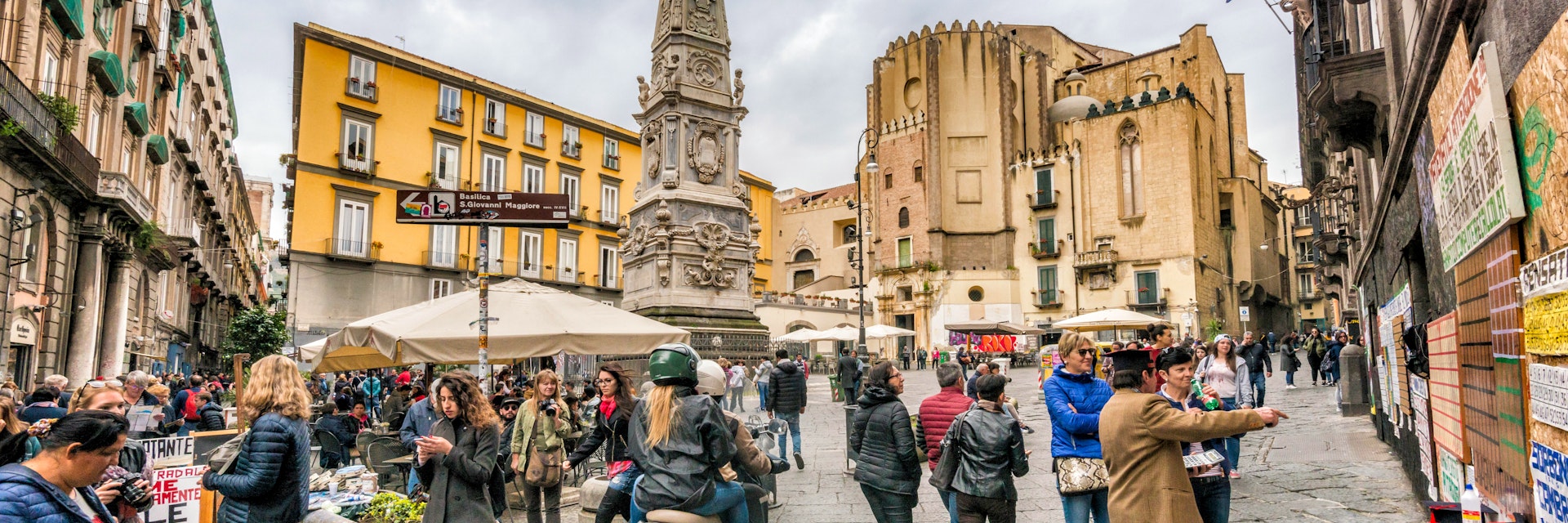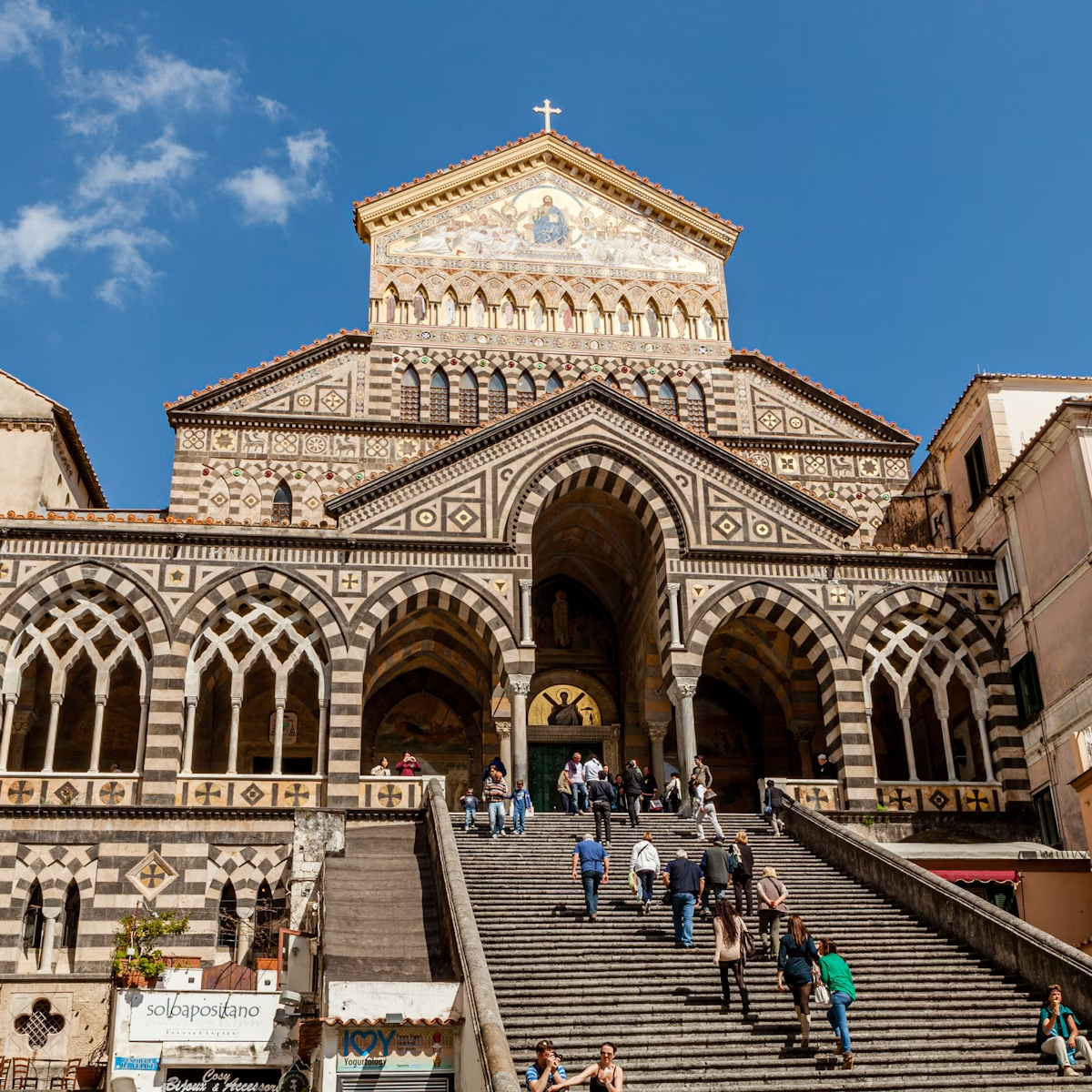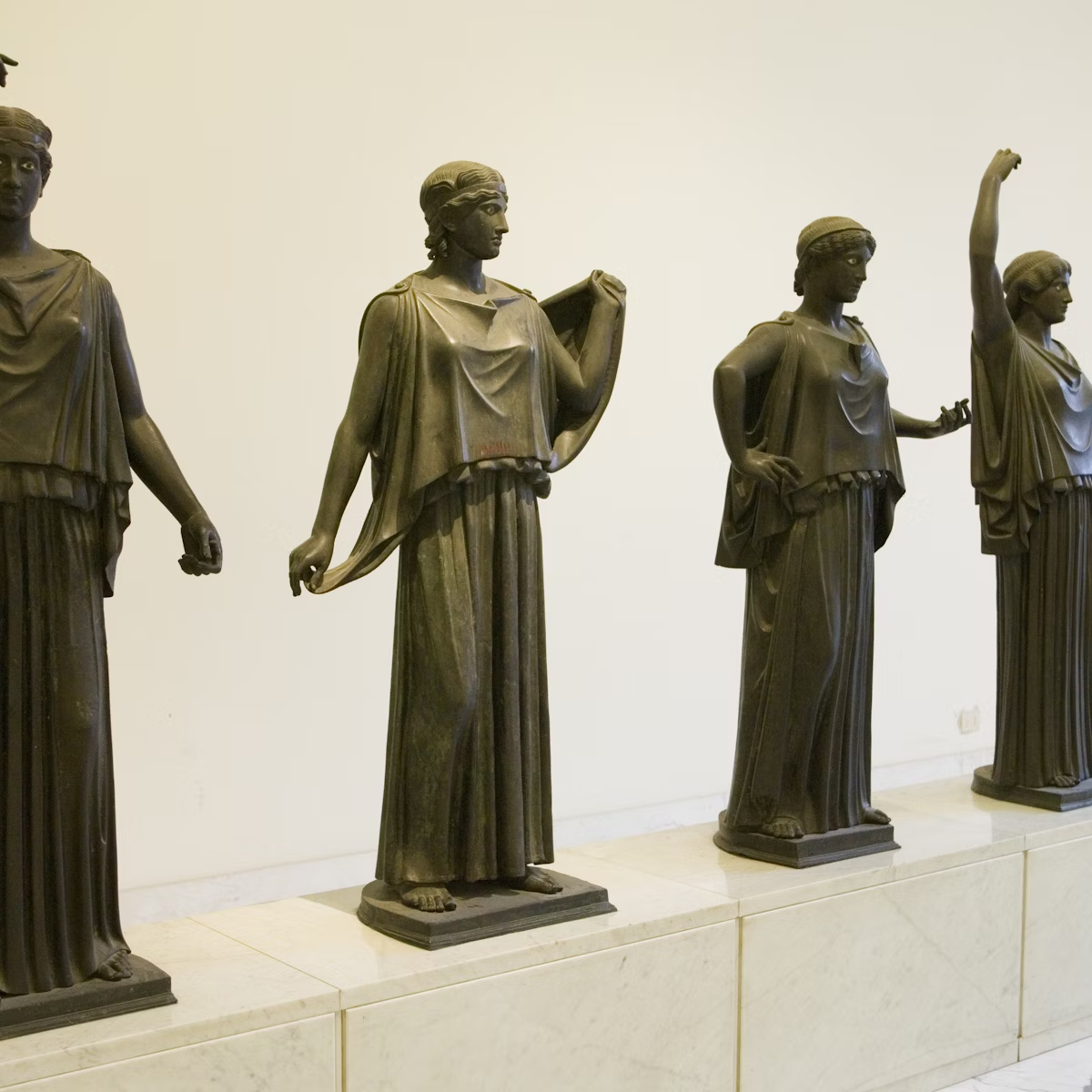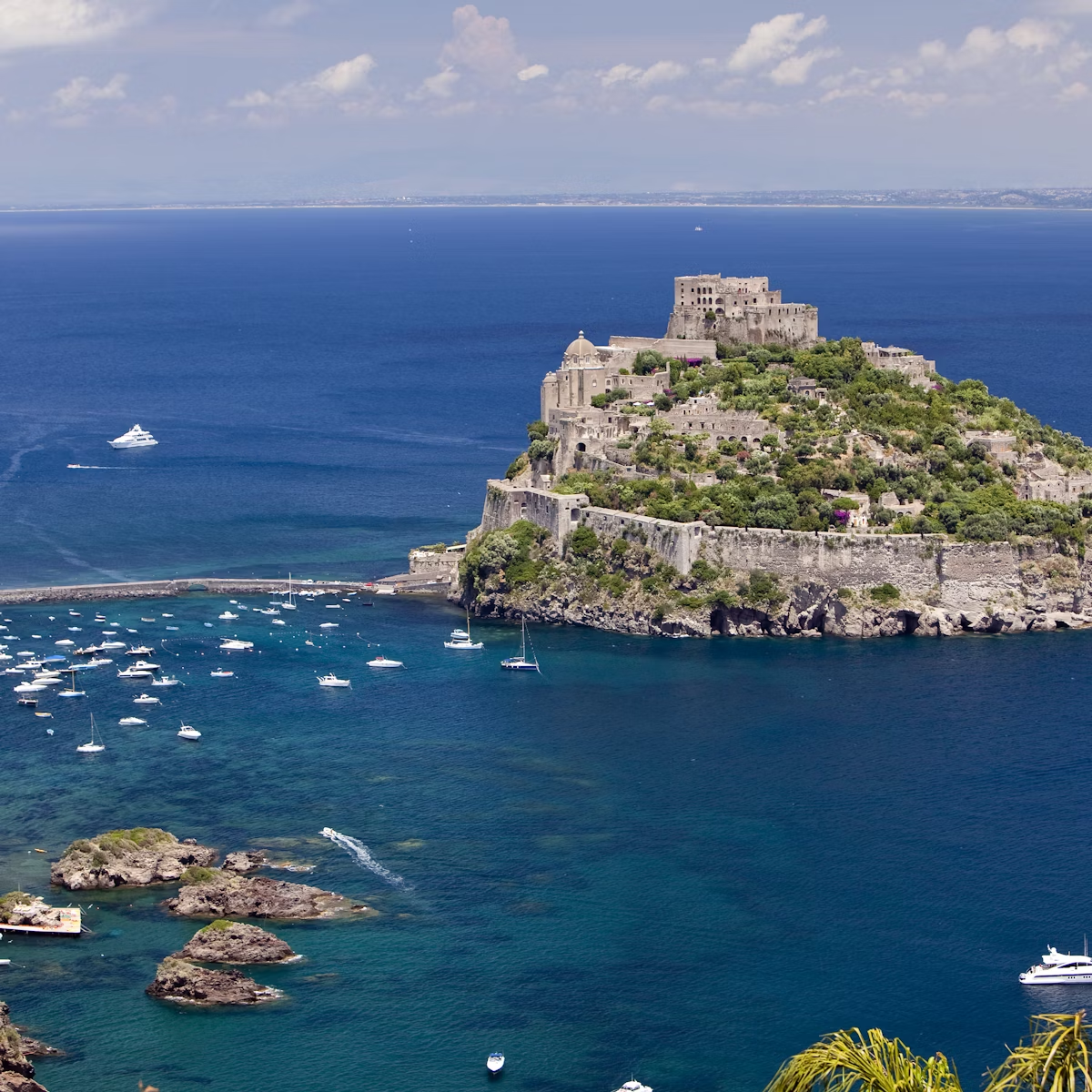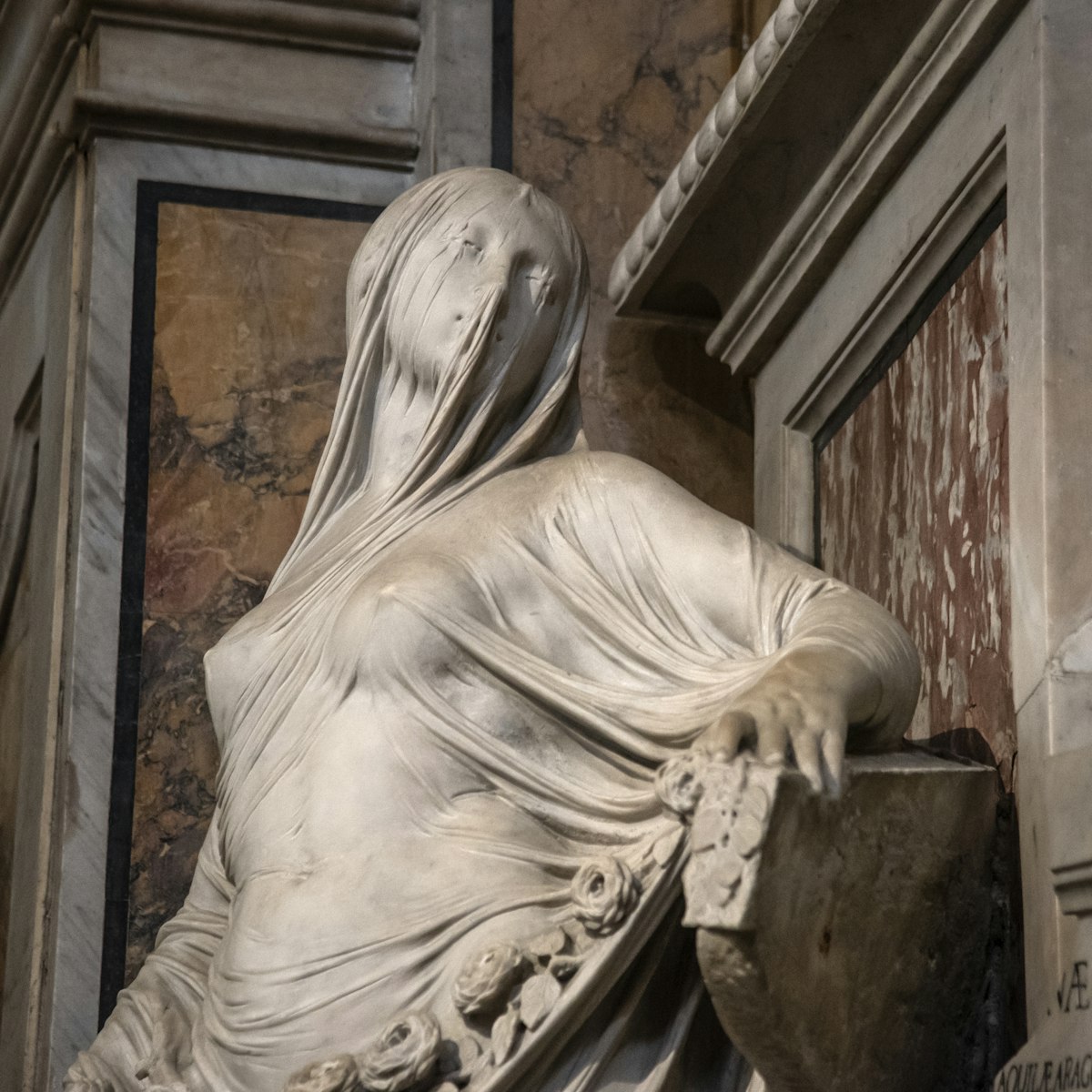Star of this operatic square is the 18th-century Guglia di San Domenico. The work of Cosimo Fanzago, Francesco Antonio Picchiatti and Domenico Antonio Vaccaro, the obelisk honours its namesake saint for stamping out the plague epidemic of 1656. Unfaithful Maria d'Avalos and her lover, Don Fabrizio, weren't quite as lucky – Palazzo dei Di Sangro is where Maria's jealous husband, Neapolitan musician Carlo Gesualdo, murdered the lovebirds in 1590.
Altogether more upbeat is the Gothic Chiesa di San Domenico Maggiore, whose curious nave flanks the piazza's northern edge. If you can see a face in the facade, you're not having visions: it was an intentional add-on, created to jazz up the church's derrière after the piazza's creation.
